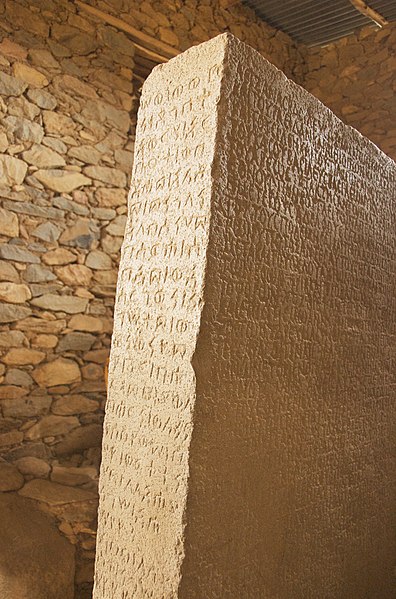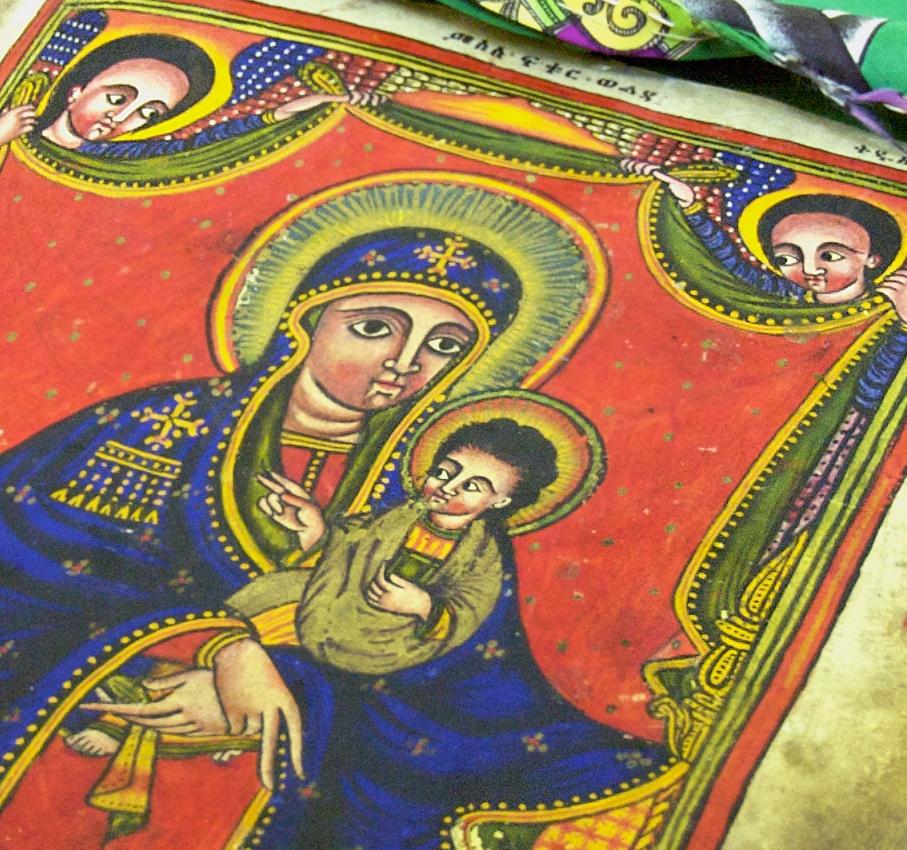Assumption of the Virgin and God the Father Holding an Orb, Coptic Christian manuscript

These collections, including biblical and liturgical texts, hagiographies, legal documents and local historical writings, are the witnesses of an African Christian culture born as early as the 4th century A.D. All these documents are currently insufficiently researched and are in danger of disappearing because of improper storage conditions, fires and thefts.
Prof. Nosnitsin’s ETHIO-SPARE project made several field trips to North Ethiopia to identify the most important collections, create inventories and make digital copies of over 2000 manuscripts. Next steps were the classification and scientific cataloging of these cultural treasures and the publication of selected studies and research results.

Credit: © Denis Nosnitsin
Ethiopia has the most ancient tradition of written culture in sub-Saharan Africa. Until today old monasteries and churches, scattered all over the country, hold thousands of precious manuscripts. Yet, for most part, these cultural treasures are stored in precarious conditions. Prof. Denis Nosnitsin intends to preserve and study this rich heritage that soon could be lost forever.
Supported by an ERC grant, the team led by Prof. Nosnitsin made several field trips to North Ethiopia to identify the most important collections of manuscripts, create inventories and make digital copies. The researchers visited over 100 monasteries and churches, many of them with large libraries, and were able to digitise over 2000 manuscripts.
St. George is Ethiopia’s patron saint. I was told the woman in the tree, which appears in all George-and-Dragon images in Ethiopia, represents Ethiopia in distress

The study of these manuscripts will provide new insights into the history of Ethiopia and the whole region.
This tablet, situated in a field and well below today’s ground surface, is believed to have been erected some time during the first half of the fourth century of the current era by King Ezana of Axum in what is now called Ethiopia.

The monument is interesting for several reasons. First, it is one of the few ancient written records to come from pre-Islamic Africa, Egypt being the other major source of inscriptions.
Second, the text on the Ezana Stone is written in several languages. If you Google this monument, you’ll be told the monument is trilingual: Greek, which at the time was the lingua franca in many parts of the ancient world; Ge’ez, an ancient Ethiopian language that is still a liturgical language of the Ethiopian Orthodox Church and others, and Sabaean, an Old South Arabian language used in what is now Yemen and in parts of Eritrea and northern Ethiopia.



